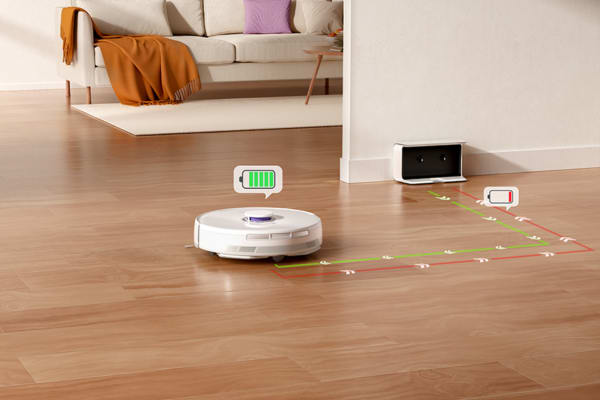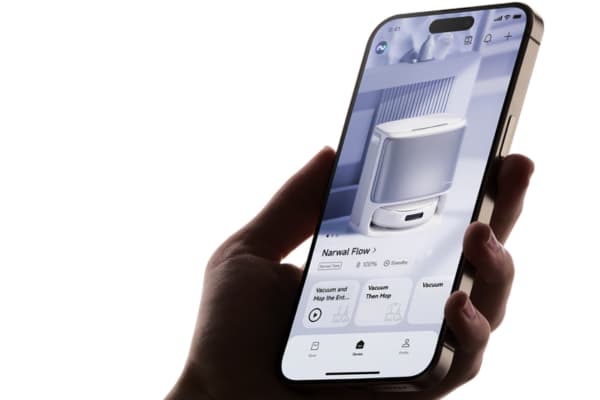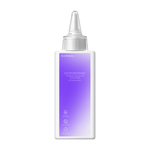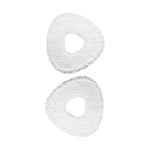Choosing between a mapping and non-mapping robot vacuum depends on your home layout, cleaning priorities, and budget. Mapping robot vacuums use advanced technology to scan and navigate spaces with precision, while non-mapping models follow random paths and offer a more affordable option.
This guide explains what robot vacuum mapping is and compares how mapping and non-mapping models perform across key areas: path planning, cleaning precision, obstacle avoidance, battery efficiency, and user control. You’ll learn which type works best for different room layouts and cleaning habits, from multi-floor homes to small open spaces. We also highlight the cost differences to help you decide which model fits your budget and needs.
To make your choice easier, we include a side-by-side comparison table and recommend top-performing Narwal mapping vacuums designed for complex layouts. Whether you're cleaning a compact apartment or a busy household, this article will help you find the best fit.
What is Robot Vacuum Mapping?
Robot vacuum mapping is a feature that allows the vacuum to create a map of your home to clean more efficiently. Using sensors and cameras, the vacuum scans its surroundings, detects obstacles, and figures out the layout of your space. This helps the robot navigate and clean systematically, ensuring no areas are missed.

Main Advantages of Mapping Function
Robot vacuums with mapping technology offer several key advantages. First, efficiency is a major benefit. With a mapped layout, the vacuum can plan the most effective cleaning path, covering all areas quickly without retracing its steps. This means faster cleaning and fewer missed spots.
Another advantage is the customization it provides. By creating a map of your home, you can set specific cleaning areas, create virtual boundaries, and even designate no-go zones for sensitive areas like pet bowls or furniture. This makes cleaning more tailored to your needs, allowing for precise control over which areas are cleaned.
Common Mapping Technologies
Several mapping technologies are used in robot vacuums:
- LIDAR: This technology uses lasers to create an accurate 2D map of your home. It’s precise and works well in low light, ensuring the vacuum can navigate easily in darker areas.
- vSLAM (Visual Simultaneous Localization and Mapping): A camera-based system that captures images to map out the space. While not as precise as LIDAR, it’s commonly used in more affordable models and still offers good navigation.
- Infrared Sensors: These sensors use infrared light to measure distance and detect objects, helping the vacuum navigate its environment. Often used alongside other technologies, they help improve the accuracy of the mapping.
If you would like to learn more about robot vacuum mapping, you can click here.
Path Planning & Cleaning Efficiency: Mapping Vacuums Lead the Way

Path planning determines how a robot vacuum navigates and covers your home. Mapping vacuums calculate efficient routes based on a digital floor plan, ensuring systematic coverage without repeating areas. They clean faster and more thoroughly by minimizing overlaps and avoiding missed spots. This leads to shorter cleaning times and less energy use.
In contrast, non-mapping vacuums move in random patterns. This approach often causes them to clean the same area multiple times while missing others entirely. As a result, they take longer to clean and consume more battery power.
Mapping vacuums are typically 30 percent more efficient than non-mapping models. They can reduce cleaning time by up to 20 to 30 minutes in larger homes. In many Australian homes, especially those with open-plan kitchens and multi-room layouts, mapping vacuums help ensure every area is cleaned effectively.
By relying on mapped routes, these vacuums also adapt better to changes in furniture placement or room layout, improving long-term performance and user satisfaction.
Cleaning Precision and Coverage in Robot Vacuums: Mapping Vacuums Excel
Mapping vacuums excel in cleaning precision and coverage because they plan their cleaning routes based on a map of your home. This allows them to clean every corner systematically, ensuring that no area is left out, even in tight spaces or under furniture. Studies show that vacuums with mapping can achieve nearly 100% coverage in their cleaning sessions, as they can avoid obstacles and target areas that need the most attention.
In contrast, non-mapping vacuums clean randomly and can miss areas, particularly in rooms with a lot of furniture or clutter. They may pass over spots multiple times while skipping others, which leads to inefficiency and wasted energy.
Ultimately, mapping vacuums provide more comprehensive cleaning, making them the better choice for homes with more complex layouts or higher precision needs.
Obstacle Detection and Avoidance in Robot Vacuums: Mapping Vacuums Have the Advantage

Effective obstacle detection and avoidance are essential for efficient cleaning, especially in spaces with furniture and tight corners. Mapping vacuums use advanced technologies like LIDAR to create detailed maps of their environment. This allows them to detect obstacles and adjust their route in real-time, avoiding collisions. As a result, mapping vacuums can achieve up to 98% efficiency in obstacle avoidance, even in complex or cluttered areas.
In contrast, non-mapping vacuums rely on basic sensors to detect obstacles and move randomly. They can avoid immediate collisions but are less efficient in navigating around obstacles, often hitting the same spot multiple times or getting stuck. Their random path means they use more time and energy, especially in environments with obstacles, leading to overall reduced performance.
In summary, mapping vacuums are more effective at detecting and avoiding obstacles, making them better suited for homes with complex layouts, while non-mapping vacuums may struggle in more cluttered environments.
Battery Life and Cleaning Time in Robot Vacuums: Mapping Vacuums Offer Greater Efficiency

Battery life and cleaning time are crucial factors when choosing a robot vacuum. Mapping vacuums are generally more efficient in both battery use and cleaning time. Thanks to their ability to plan an optimal cleaning route, these vacuums can clean for 90 to 120 minutes on a single charge, depending on the model and room layout. Since they clean in a systematic way, they avoid redundant cleaning, which helps conserve battery life.
In contrast, non-mapping vacuums often follow random paths, which results in less efficient cleaning. These vacuums may revisit areas multiple times or miss spots, leading to longer cleaning sessions. On average, they can clean for 60 to 90 minutes, as their random movement consumes more battery power to cover the same space.
Overall, mapping vacuums offer better battery efficiency, allowing for longer cleaning sessions without frequent recharges.
User Control and Customization Options in Robot Vacuums: Mapping Vacuums Offer More Flexibility

Robot vacuums with mapping technology provide superior user control and customization options. With a detailed map of your home, you can easily set specific cleaning areas, create no-go zones, and even schedule cleaning sessions for different rooms. This flexibility allows you to tailor the cleaning process to your preferences and needs.
For example, you can choose to clean only high-traffic areas or avoid certain rooms entirely. Some mapping vacuums also offer features like virtual boundaries, so the robot knows exactly where to go and where not to.
Non-mapping vacuums, while easier to use, offer fewer customization options. They usually only have basic features like scheduled cleaning or spot cleaning, but they can't target specific areas or avoid obstacles based on a map.
In short, mapping vacuums offer more ways to customize your cleaning experience, giving you greater control over how and when your home gets cleaned.
Cost and Value for Money in Robot Vacuums: Non-Mapping Vacuums Are More Affordable
Cost plays a big role when deciding on a robot vacuum. Non-mapping vacuums are generally more budget-friendly, often priced between 100 and 300 dollars. They provide reliable performance for small or open spaces and are a good choice for users focused on affordability and simplicity.
Mapping vacuums typically cost more, ranging from 300 to over 1000 dollars depending on the features. These models offer better navigation, customization, and overall cleaning performance. They are especially useful in larger homes with more complex layouts, where the added investment can lead to better results and time savings.
For those looking for high performance with lasting value, certain advanced mapping models from Narwal provide strong efficiency and control across different floor types and room layouts.
Best Use Cases for Mapping vs Non-Mapping Vacuums

Choosing the right robot vacuum depends on your home’s layout and how complex your cleaning needs are. Mapping vacuums are ideal for multi-room homes, split-level layouts, and homes with pets or children where precision and efficiency are important. They perform especially well in larger spaces or in homes with a mix of floor types and obstacles. For example, mapping vacuums are well suited to multi-level homes in Melbourne suburbs or larger family houses with several rooms and hallways.
Non-mapping vacuums are better suited for simpler environments. If you live in a small apartment with a single large room or an open layout, a non-mapping vacuum can still provide effective cleaning without the added cost of advanced navigation. They are also a good fit for rental units, holiday homes, or households with older adults who prefer simpler devices.
For Narwal users, mapping vacuums like the Freo Z Ultra or Freo Pro offer advanced features for complex layouts. For users in smaller spaces or those who prefer easier setup and lower price points, models like the Freo X Plus offer solid performance without the need for full mapping.
Comparison Table: Mapping vs No Mapping Robot Vacuums
When choosing the right robot vacuum, it’s essential to understand the differences between mapping and non-mapping models. Each type offers unique features that suit different home environments and cleaning needs. To help you better grasp these differences, the table below summarizes how each type performs across key factors, making it easier for you to make an informed decision.
Feature |
Mapping Vacuums |
Non-Mapping Vacuums |
| Path Planning | Precise, optimized paths | Random movement |
| Cleaning Efficiency | Faster, no overlapping areas | Slower, less efficient |
| Cleaning Precision & Coverage | High, thorough, systematic coverage | Inconsistent, random coverage |
| Obstacle Detection & Avoidance | Advanced, real-time adjustments | Basic, more likely to get stuck |
| Suitable Room Layouts | Complex layouts, multi-level spaces | Small, open layouts |
| Battery Life & Cleaning Time | Longer, efficient use of power | Shorter, more recharging |
| User Control & Customization | Set zones, no-go areas, scheduling | Limited control options |
| Cost & Value for Money | Higher price, more advanced features | Affordable, budget-friendly |
| Suitable Usage Scenarios | Large homes, complex spaces, multi-floor | Smaller, simple homes or areas |
Best Mapping Robot Vacuums: Narwal Recommendations
Narwal is known for its innovative robot vacuums that combine powerful cleaning with advanced mapping and navigation technology. Here are the top Narwal models that stand out for their performance, unique features, and smart cleaning capabilities:
Narwal Freo Z10 Robot Vacuum & Mop
[cta:narwal-freo-z10-robot-vacuum-mop]
The Narwal Freo Z10 is ideal for homes that need both vacuuming and mopping. Equipped with 15000Pa suction power, it excels at cleaning carpets and hard floors. The vacuum features a bionic hand-wiping system, which ensures thorough cleaning, especially in corners and edges. It also uses HEPA filtration, making it a perfect option for those with allergies or pets. Additionally, the self-cleaning base station reduces maintenance time, and the DirtSense 3.0 system automatically adjusts cleaning power depending on dirt levels, ensuring your floors are consistently spotless.
Narwal Freo Z Ultra Robot Vacuum & Mop
[cta:narwal-freo-z-ultra-robotic-vacuum-and-mop-cleaner-clean-before-you-even-notice]
The Narwal Freo Z Ultra stands out for its use of dual RGB cameras and AI navigation that allow it to make real-time cleaning decisions. This advanced system adapts the cleaning intensity based on the dirt detected, ensuring a more efficient clean. The vacuum features a tangle-free system, making it particularly effective in homes with pets. The self-emptying base station and quiet operation (as low as 55dB) make it a low-maintenance and quiet option, ideal for larger homes or spaces where noise could be a concern.
Narwal Freo Pro Robot Vacuum & Mop
The Narwal Freo Pro combines 8500Pa suction power with a DualFlow Tangle-Free System, allowing it to clean effectively without the hassle of tangled hair. Its Reuleaux Triangular Mop technology offers efficient mopping at a 180RPM rotation speed with 2.65 lbs of downward pressure, ensuring stubborn stains are removed with ease. The AI DirtSense system analyzes dirt levels and adjusts cleaning as needed. Additionally, it uses Lidar 4.0 navigation to map your home, enabling efficient cleaning across multiple floors or complex layouts.
Further Reading: The Robot Vacuum with the Best Mapping Technology
Conclusion
Now that you've explored the differences between mapping and non-mapping robot vacuums, it's clear that mapping vacuums offer precision, efficiency, and customization for complex spaces, while non-mapping vacuums provide a simpler, more budget-friendly option for smaller areas.
If you're ready to upgrade to smarter cleaning, Narwal AU offers some of the best options for a mapping robot vacuum. With features like advanced mapping, powerful suction, and self-cleaning bases, Narwal models like the Freo Z10, Freo Z Ultra, and Freo Pro are designed to meet your needs.
Don't wait for the mess to build up. Explore Narwal’s models now and find the perfect robot vacuum to fit your home.
























































